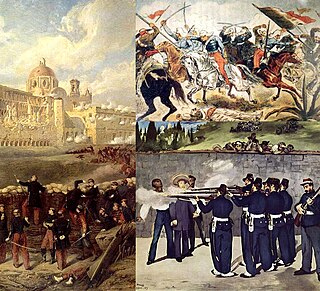 W
WThe Second French Intervention in Mexico, was an invasion of Mexico, launched in late 1861, by the Second French Empire (1852–1870), aiming to establish in Mexico a regime favorable to French interests.
 W
WThe Mexican Empire or Second Mexican Empire was the name of Mexico under a constitutional, hereditary monarchy declared by a Mexican Assembly of Notables in accordance with the interests of the French Empire, during the Second French intervention in Mexico. Napoleon III of France wanted to establish a monarchist ally in the Americas as a restraint upon the growing power of the United States. Chosen as the Mexican emperor was Austrian Archduke Ferdinand Maximilian, of the House of Habsburg-Lorraine. His wife and empress of Mexico was the Belgian princess Charlotte of the House of Saxe-Coburg and Gotha.
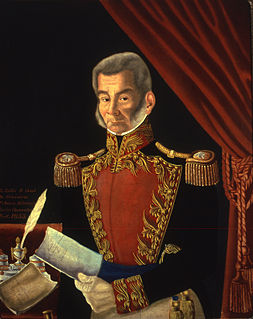 W
WJuan Nepomuceno Álvarez Hurtado de Luna, generally known as Juan Álvarez, was a general, long-time caudillo in southern Mexico, and interim president of Mexico for two months in 1855, following the liberals ouster of Antonio López de Santa Anna. Álvarez had risen to power in the Tierra Caliente, in southern Mexico with the support of indigenous peasants whose lands he protected. He fought along with heroes of the insurgency, José María Morelos and Vicente Guerrero in the War of Independence, and went on to fight in all the major wars of his day, from the "Pastry War", to the Mexican–American War, and the War of the Reform to the war against the French Intervention. A liberal reformer, a republican and a federalist, he was the leader of a revolution in support of the Plan de Ayutla in 1854, which led to the deposition of Santa Anna from power and the beginning of the political era in Mexico's history known as the Liberal Reform. According to historian Peter Guardino: "Álvarez was most important as a champion of the incorporation of Mexico's peasant masses into the polity of [Mexico] ... advocating universal male suffrage and municipal autonomy."
 W
WBagdad, Tamaulipas, Mexico was a town established in 1848 on the south bank of the mouth of the Río Grande. This town is also known as the Port of Bagdad or the Port of Matamoros, since it is inside the municipality of Matamoros, Tamaulipas. Officially declared non-existent in 1880, it is now invisible, covered by the shifting sands of time.
 W
WFrançois Achille Bazaine was an officer of the French army. Rising from the ranks, during four decades of distinguished service under Louis-Philippe and then Napoleon III, he held every rank in the army from Fusilier to Marshal of France. From 1863 he was a Marshal of France, and it was in this role that he surrendered the last organized French army to Prussia during the Franco-Prussian war, during the siege of Metz.
 W
WJean-Baptiste Billot was a French general and politician.
 W
WJules Brunet was a French military officer who served the Tokugawa shogunate during the Japanese Boshin War. Originally sent to Japan as an artillery instructor with the French military mission of 1867, he refused to leave the country after the shōgun was defeated, and played a leading role in the separatist Republic of Ezo and its fight against forces of the Meiji Restoration. Returning to France after the rebellion's defeat, he fought in the Franco-Prussian War, and later reached the rank of general of division and worked for the French Ministry of War.
 W
WCajemé / Kahe'eme, born and baptized José María Bonifacio Leyba Pérez, was a prominent Yaqui military leader who lived in the Mexican state of Sonora from 1835 to 1887. Kahe'eme (Cajemé) is originally a family clan name, and was also used by Fernando Leyba, the father of José María Bonifacio Leyba Pérez.
 W
WThe Canon obusier de 12, also known as the "Canon de l’Empereur", was a type of canon-obusier developed by France in 1853. Its performance and versatility allowed it to replace all the previous field guns, especially the Canon de 8 and the Canon de 12 as well as the two howitzers of the Valée system.
 W
WJosé María Jesús Carbajal (1809–1874) was a Mexican Tejano who opposed the Centralist government installed by Antonio López de Santa Anna, but was a conscientious objector who refused to take up arms against his own people. Mexican conscientious objectors paid a price for their refusals, in that Texan Brigadier General Thomas Jefferson Rusk confiscated the homes of those who wished to remain neutral in the war. In July 1836, Rusk ordered the Carbajal and other Tejano families of Victoria escorted off their own land. They took refuge in New Orleans.
 W
WCharlotte of Belgium, known by the Spanish version of her name, Carlota, was by birth a Princess of Belgium and member of the House of Wettin in the branch of Saxe-Coburg and Gotha. As the wife of Archduke Maximilian of Austria, Viceroy of Lombardy–Venetia and later Emperor of Mexico, she became Archduchess of Austria and Empress consort of Mexico.
 W
WCarnival of Huejotzingo is one of Mexico's carnivals, which takes place in the Huejotzingo municipality in the state of Puebla.
 W
WJosé Venustiano Carranza de la Garza was a wealthy land owner and politician who was Governor of Coahuila when the constitutionally elected president Francisco I. Madero was overthrown in a February 1913 military coup. Known as the Primer Jefe or "First Chief" of the Constitutionalists, Carranza was a shrewd politician rather than a military man. He supported Francisco I. Madero's challenge to the Díaz regime in the 1910 elections, but became a critic of Madero once Díaz was overthrown in May 1911. Madero did appoint him the governor of Coahuila. When Madero was murdered during the February 1913 counter-revolutionary coup, Carranza drew up the Plan of Guadalupe, a purely political plan to oust Huerta. As a sitting governor Carranza held legitimate power and he became the leader of northern coalition opposed to Huerta. The Constitutionalist faction was victorious and Huerta ousted. The various factions of the coalition against Huerta fell apart and a blood civil war of the winners ensured. Carranza was a major figure of the Mexican Revolution. The Constitutionalist Army under General Álvaro Obregón defeated General Pancho Villa in the north, and Emiliano Zapata and the peasant army of Morelos returned to guerrilla warfare. Carranza's position was secure enough politically and militarily to take power in Mexico City, although peasant leader Emiliano Zapata and revolutionary general Pancho Villa remained threats. Carranza consolidated enough power in the capital that he called a constituional convention in 1916 to revise the 1857 liberal constitution. The Constitutionalist faction had fought to defend it and return Mexico to constitutional rule. With the promulgation of a new revolutionary Mexican Constitution of 1917, he was elected president, serving from 1916 to 1920.
 W
WMartín Carrera Sabat was a Mexican general and interim president of the country for about a month in 1855. He was a moderate Liberal. His family still influences Mexican politics, and some of his grandsons, were revolutionaries in the Mexican Revolution.
 W
WA casquette d'Afrique was a type of lightweight military headgear generally used by the French metropolitan and colonial armies from the early 1830s to the 1860s.
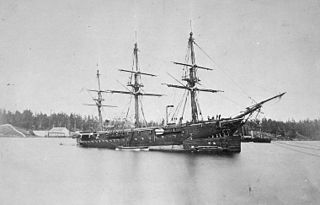 W
WHMS Charybdis was a 21-gun Royal Navy Pearl-class corvette launched on 1 July 1859 at Chatham Dockyard.
 W
WThe Chassepot, officially known as Fusil modèle 1866, was a bolt action military breechloading rifle. It is famous for having been the arm of the French forces in the Franco-Prussian War of 1870–1871. It replaced an assortment of Minié muzzleloading rifles, many of which were converted in 1864 to breech loading. An improvement to existing military rifles in 1866, the Chassepot marked the commencement of the era of modern bolt action, breech-loading military rifles. The Gras rifle was an adaption of the Chassepot designed to fire metallic cartridges introduced in 1874.
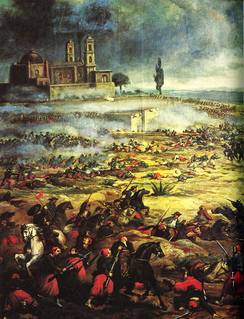 W
WCinco de Mayo is an annual celebration held on May 5, which commemorates the anniversary of Mexico's victory over the French Empire at the Battle of Puebla in 1862. Led by General Ignacio Zaragoza, the victory of a smaller, poorly equipped Mexican force against the larger and better armed French army was a morale boost for the Mexicans. Zaragoza died months after the battle from an illness, and a larger French force ultimately defeated the Mexican army at the Second Battle of Puebla and occupied Mexico City.
 W
WThe Commemorative medal of the Mexico Expedition was a French commemorative campaign medal established by decree of French emperor Napoleon III on 29 August 1863 to recognize military service during the 1862-1863 French intervention in Mexico.
 W
WIgnacio Gregorio Comonfort de los Ríos, known as Ignacio Comonfort, was a Mexican politician and soldier. He became President of Mexico in 1855 after the outbreak of the Revolution of Ayutla that overthrew Santa Anna.
 W
WRamón Corona was a liberal Mexican general and diplomat.
 W
WRómulo Díaz de la Vega was de facto president of Mexico in 1855. He studied military science and rose to the rank of general.
 W
WJosé de la Cruz Porfirio Díaz Mori was a Mexican general and politician who served seven terms as President of Mexico, a total of 31 years, from 28 November 1876 to 6 December 1876, 17 February 1877 to 1 December 1880 and from 1 December 1884 to 25 May 1911. The entire period from 1876 to 1911 is often referred to as the Porfiriato.
 W
WÉlie Frédéric Forey was a Marshal of France.
 W
WForfait was an unarmored screw corvette built for the French Navy in the late 1850s that entered service in 1860. She saw service in the French intervention in Mexico in the 1860s and was sunk in a collision in 1875.
 W
WGomer was a paddle frigate of the French Navy, lead ship of her class.
 W
WManuel del Refugio González Flores was a Mexican military general and liberal politician who served as the 35th President of Mexico from 1880 to 1884. Before initiating his presidential career, González played important roles in the Mexican–American War as a lieutenant, and later in the Reform War as general on the conservative side. In the French intervention in Mexico, González fought for the Mexican Republic under the command of General Porfirio Díaz. He supported Díaz's attempts to gain the presidency of Mexico, which succeeded in 1876. He served as Mexican Secretary of War in the Díaz administration from 1878 to 1879. Díaz could not be re-elected to the presidency in 1880, since the basis of his coup against Sebastián Lerdo de Tejada was the principle of no-reelection, so Díaz worked for the election of his political client González, who would be weak rival should Díaz run again. His presidency from 1880 to 1884 is marked by a number of major diplomatic and domestic achievements, which historian Friedrich Katz considers to be no less than "the profound transformation" of Mexico. Although the González presidency has been considered corrupt, that assessment is colored by the difficult financial circumstances in 1884 and by Díaz's campaign to discredit his successor, paving the way for his own re-election in 1884.
 W
WJesús González Ortega was a military man and Mexican politician; governor of Zacatecas and actively participated next to Benito Juárez in the War of Reform and during the French intervention in Mexico. He is notable for defending the city of Puebla from the French army March 16, 1863 to May 16, 1863. .
 W
WPedro Hinojosa de la Garza Falcón was a Mexican politician and military general who fought in the Mexican–American War, the Reform War, and in the French intervention in Mexico. In addition, Hinojosa was governor of Durango, Nuevo Leon, and Chihuahua, and served as Secretary of War and Navy.
 W
WJosé María Iglesias Inzáurraga was a Mexican lawyer, professor, journalist and liberal politician. He is known as author of the Iglesias law, an anticlerical law regulating ecclesiastical fees and aimed at preventing the impoverishment of the Mexican peasantry. From October 31, 1876 to January 23, 1877, he claimed the interim presidency of Mexico. However, he was never undisputed president.
 W
WIntrépide was intended to be one of five second-rank, 90-gun, steam-powered Algésiras-class ships of the line built for the French Navy in the 1850s, but her construction was suspended for many years before she was converted into a troopship in 1863. The ship evacuated French troops in 1866–1867 after the defeat of Second French intervention in Mexico. Intrépide became a school ship in 1883 and was renamed Borda in 1890. She was withdrawn from service in 1912 and sank by accident the following year. The ship was scrapped in place from 1913 to 1922.
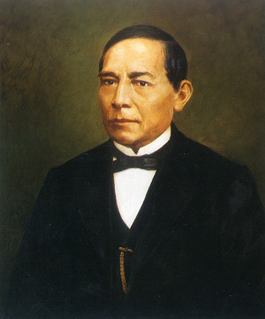 W
WBenito Pablo Juárez García was a Mexican lawyer and politician, who served as the 26th president of Mexico from 1858 until his death in 1872. He was the first president of Mexico who was of indigenous origin. Born in Oaxaca to a poor Zapotec rural family and orphaned when he was young, he moved to Oaxaca City at the age of 12 to go to school. He was aided by a lay Franciscan, and enrolled in seminary, later studying law at the Institute of Sciences and Arts and becoming a lawyer. After being appointed as a judge, in his 30s he married Margarita Maza, a socially prominent woman of Oaxaca City. From his years in college, he was active in politics. Appointed as head justice of the nation's Supreme Court, Juárez identified primarily as a Liberal politician. In his life, he wrote briefly about his indigenous heritage.
 W
WThe La Hitte system, named after the French general Ducos, Count de La Hitte, was an artillery system designed in March 1858 to implement rifled muzzle-loading guns in the French Army.
 W
WPelagio Antonio de Labastida y Dávalos was a Mexican Roman Catholic prelate, lawyer and doctor of canon law, and politician. He was a member of the imperial regency that invited Maximilian of Austria to accept the throne of Mexico.
 W
WSebastián Lerdo de Tejada Corral was a jurist and Liberal president of Mexico, succeeding Benito Juárez who died of a heart attack in July 1872. Lerdo was elected to his own presidential term later in 1872 rather than remaining successor due to his previous office of Chief Justice of the Supreme Court. Juárez's political rival liberal General Porfirio Díaz had attempted a coup against Juárez, but his Plan de la Noria failed and Díaz was eliminated as a political foe during Lerdo's 1872-1876 term, giving Lerdo considerable leeway to pursue his program without political interference. Lerdo was more successful than Juárez in his final years as president in pacifying the country and strengthening the Mexican state. He ran for another term in 1876 and was elected, but was overthrown by Porfirio Díaz and his supporters under the Plan of Tuxtepec, which asserted the principle of no-reelection to the presidency. Lerdo died in exile in New York in 1889, but Díaz invited the return of his body to Mexico for burial with full honors. Not counting Miguel Miramón, an unrecognized president during the Reform War, he is the first president of the recognized presidents that was not born during Spanish colonial rule.
 W
WÉdouard Manet was a French modernist painter. He was one of the first 19th-century artists to paint modern life, and a pivotal figure in the transition from Realism to Impressionism.
 W
WLeonardo Márquez Araujo was a conservative Mexican general. He led forces in opposition to the Liberals led by Benito Juarez, but following defeat in the reform war was forced to guerilla warfare. Later, he helped the French in their intervention to help restore the conservative cause. However, their defeat forced him into exile mostly for the rest of his life.
 W
WJosé María Mata Reyes was a 19th-century liberal politician and diplomat from Mexico who served for two months as minister of Finance in the cabinet of Benito Juárez (1860–1861), three months as minister of Foreign Affairs in the cabinet of Porfirio Díaz (1878), as envoy extraordinary and minister plenipotentiary of Mexico to the United States (1859–1860), as congressman in the Chamber of Deputies, and as municipal president of Martínez de la Torre, Veracruz.
 W
WMaximilian I was an Austrian archduke who reigned as the only Emperor of the Second Mexican Empire from 10 April 1864 until his execution on 19 June 1867. A younger brother of Emperor Franz Joseph I of Austria, Maximilian had a distinguished career as commander-in-chief of the Imperial Austrian Navy.
 W
WGermán Edelmiro Mayer was an Argentine soldier, writer and statesman who fought in the Argentine Civil Wars, the American Civil War and against the French intervention in Mexico. Mayer was the third governor of the national territory of Santa Cruz, being in office from 1893 until his death in 1897.
 W
WJosé Tomás de la Luz Mejía Camacho, better known as Tomás Mejía, was a Mexican soldier. He was of Otomi indigenous origin and came from a humble background, studying in the local rural school. He was a loyal Catholic siding with the conservatives during the Reform War and later the Second French intervention.
 W
WJuan Nepomuceno Méndez was a Mexican general, a Liberal politician and confidante of Porfirio Díaz, and interim president of the Republic for a few months during the Porfiriato. He served from 6 December 1876 until 17 February 1877.
 W
WMiguel Gregorio de la Luz Atenógenes Miramón y Tarelo, known as Miguel Miramón, was a Mexican conservative general and politician. He opposed the liberal Constitution of 1857 and served as President of Mexico in opposition to the constitutional president, Benito Juárez of the Liberal Party. He was one of the youngest rulers and the first not born during Spanish colonial rule. He served in the imperial army during the French Intervention in Mexico and was executed with Emperor Maximilian and General Tomás Mejía by a republican army firing squad. He remains a controversial figure in Mexico, combining "military skill with political miscalculation."
 W
WA mitrailleuse is a type of volley gun with barrels of rifle calibre that can fire either all rounds at once or in rapid succession. The earliest true mitrailleuse was invented in 1851 by Belgian Army captain Fafschamps, ten years before the advent of the Gatling gun. It was followed by the Belgian Montigny mitrailleuse in 1863. Then the French 25 barrel "Canon à Balles", better known as the Reffye mitrailleuse, was adopted in great secrecy in 1866. It became the first rapid-firing weapon deployed as standard equipment by any army in a major conflict when it was used during the Franco-Prussian War of 1870–71.
 W
WNapoleon III was the first president of France from 1848 to 1852 and the emperor of the French from 1852 to 1870. A nephew of Napoleon I, he was the last monarch to reign over France. Elected to the presidency of the Second Republic in 1848, he seized power by force in 1851, when he could not constitutionally be reelected; he later proclaimed himself Emperor of the French. He founded the Second Empire, reigning until the defeat of the French Army and his capture by Prussia and its allies at the Battle of Sedan in 1870. Napoleon III was a popular monarch, who used plebiscites to guide his actions, oversaw the modernisation of the French economy and worked to have the centre of Paris rebuilt following Napoleon III style guidelines. He expanded the French overseas empire and made the French merchant navy the second largest in the world, engaged in the Second Italian War of Independence as well as the disastrous Franco-Prussian War, in which he commanded his soldiers during the fight and was captured.
 W
WThe French ironclad Normandie was the third and last of the three wooden-hulled Gloire-class ironclads built for the French Navy in 1858–62. The ships of the Gloire class were classified as armoured frigates because they only had a single gun deck and their traditional disposition of guns arrayed along the length of the hull also meant that they were broadside ironclads. Normandie was the first ironclad to cross the Atlantic in support of the French intervention in Mexico in 1862. Although the ship was active during the Franco-Prussian War of 1870–71, she saw no action. The unseasoned timber of her hull rotted quickly; she was condemned in 1871 and subsequently scrapped.
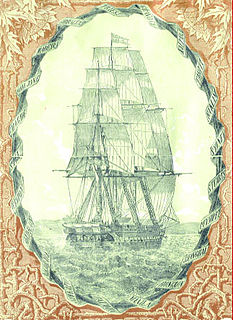 W
WSMS Novara was a sail frigate of the Austro-Hungarian Navy most noted for sailing the globe for the Novara Expedition of 1857–1859 and, later for carrying Archduke Maximilian and wife Carlota to Veracruz in May 1864 to become Emperor and Empress of Mexico.
 W
WLauro Villar Ochoa was a Mexican military general who is known for defending the National Palace of Mexico and Francisco I. Madero's administration, along with Ángel Ortiz Monasterio, from the rebellious attacks of the general Bernardo Reyes of the Ten Tragic Days in 1913. He also fought in the French Intervention and against the empire of Maximilian I of Mexico.
 W
WThe Pastry War, also known as the First French intervention in Mexico or the First Franco-Mexican War (1838–1839), began in November 1838 with the naval blockade of some Mexican ports and the capture of the fortress of San Juan de Ulúa in Veracruz by French forces sent by King Louis-Philippe. It ended several months later in March 1839 with a British-brokered peace. The intervention followed many claims by French nationals of losses due to unrest in Mexico. This incident, the first and lesser of Mexico's two 19th-century wars with France, preceded the French invasion of 1861–1867 which supported the short reign of Emperor Maximilian I of Mexico, whom the Mexicans executed by firing squad at the end of that later conflict.
 W
WJosé Ignacio Pavón was a Mexican lawyer, jurist and politician. From 13 August 1860 to 15 August 1860, he served as unconstitutional interim conservative president of Mexico in opposition to Benito Juárez, the constitutional president.
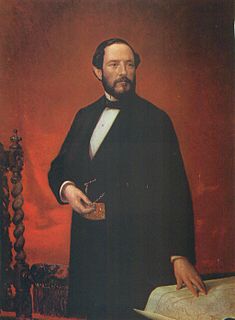 W
WJuan Prim y Prats, 1st Count of Reus, 1st Marquis of los Castillejos, 1st Viscount of Bruch was a Spanish general and statesman who was briefly Prime Minister of Spain until his assassination.
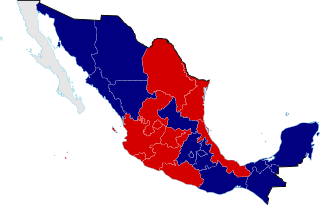 W
WThe War of Reform in Mexico, during the Second Federal Republic of Mexico, was the three-year civil war (1857–1860) between members of the Liberal Party who had taken power in 1855 under the Plan of Ayutla, and members of the Conservative Party resisting the legitimacy of the government and its radical restructuring of Mexican laws, known as La Reforma. The Liberals wanted to eliminate the political, economic, and cultural power of the Catholic church as well as reduce the role of the Mexican Army. Both the Catholic Church and the Army were protected by corporate or institutional privileges (fueros) established in the colonial era. Liberals sought to create a modern nation-state founded on liberal principles. The Conservatives wanted a centralist government, some even a monarchy, with the Church and military keeping their traditional roles and powers, and with landed and merchant elites maintaining their dominance over the majority mixed-race and indigenous populations of Mexico.
 W
WVicente Riva Palacio y Guerrero was a liberal politician, novelist, journalist, intellectual, and military leader.
 W
WManuel Robles Pezuela. He was unconstitutional provisional President of Mexico from 1858 to 1859 on the conservative side in the Mexican War of the Reform, serving by appointment of a military junta in opposition to the constitutional President Benito Juárez, who was the head of the liberal party.
 W
WJosé Mariano de Salas was a Mexican general and politician who served twice as interim president of Mexico. He was also a member of the executive triumvirate of the Second Mexican Empire that invited Maximilian of Habsburg to take the throne.
 W
WAntonio de Padua María Severino López de Santa Anna y Pérez de Lebrón, usually known as Santa Anna or López de Santa Anna, was a Mexican politician and general. His influence on post-independence Mexican politics and government in the first half of the nineteenth century is such that historians of Mexico often refer to it as the "Age of Santa Anna".
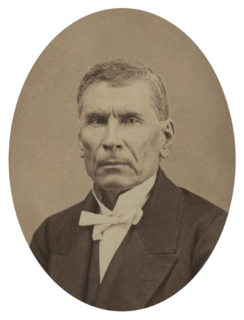 W
WJosé Santiago Vidaurri Valdez was a controversial and powerful governor of the Mexican states of Nuevo León and Coahuila between 1855 and 1864. He was an advocate of states' rights. In 1861, he sought an association with the Confederate States of America, which benefited his region economically. Earlier in 1855, he had been a supporter of the Revolution of Ayutla, which brought liberals to power. Vidaurri supported Benito Juárez in the War of the Reform. He later broke with Juárez and supported Emperor Maximilian I of Mexico. When the French regime fell in 1867, Vidaurri was captured and executed for his alliance with the French. In Nuevo León he remains an important historical figure.
 W
WIgnacio Zaragoza Seguín was a Mexican general and politician. He led the Mexican army 600 men that defeated 6,500 invading French forces the elite French legionnaires at the Battle of Puebla on May 5, 1862.
 W
WFélix María Zuloaga Trillo was a Mexican general and a Conservative leader in the War of Reform. In the late 1850s and early 1860s, Zuloaga served as unconstitutional interim conservative president of Mexico in opposition to the constitutional president Benito Juárez of the Liberal Party.